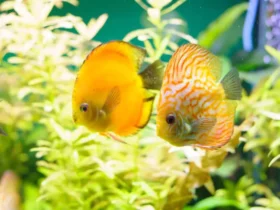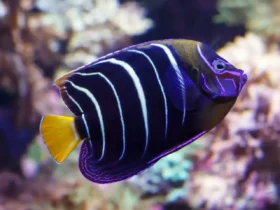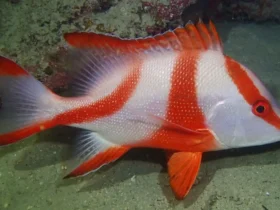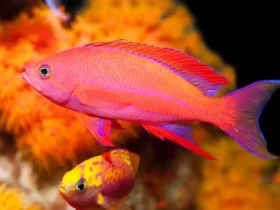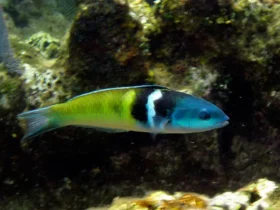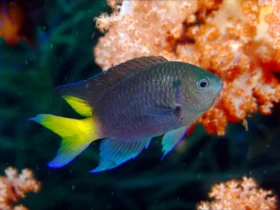Beneath the turquoise waters of the tropical coral reefs, a small but dazzling fish captivates the eyes of divers and snorkelers—the Blue-ringed Angelfish (Pomacanthus annularis). Renowned for its vibrant coloration, striking patterns, and graceful presence, this species stands out as a true gem of the underwater world. Let’s dive into the captivating world of the Blue-ringed Angelfish and explore the remarkable characteristics that make it an icon of the coral reefs.
Blue-ringed Angelfish images

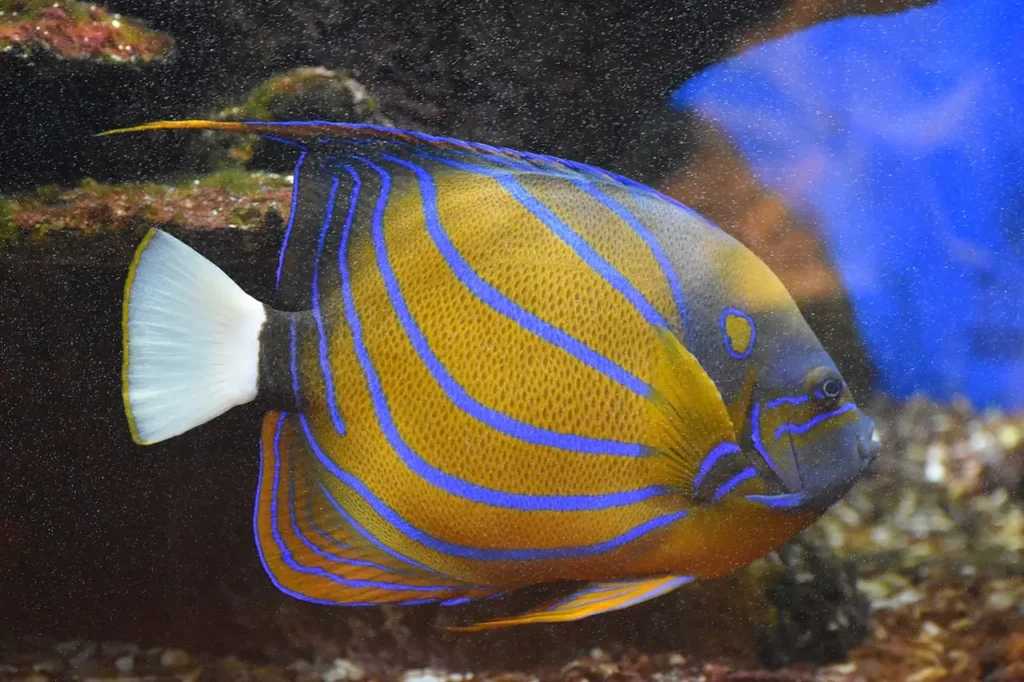


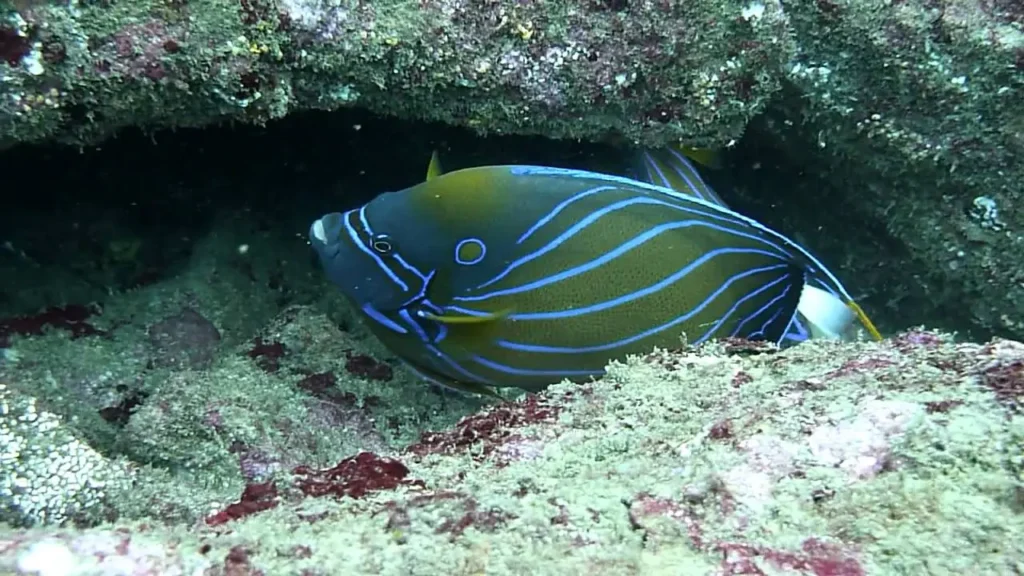


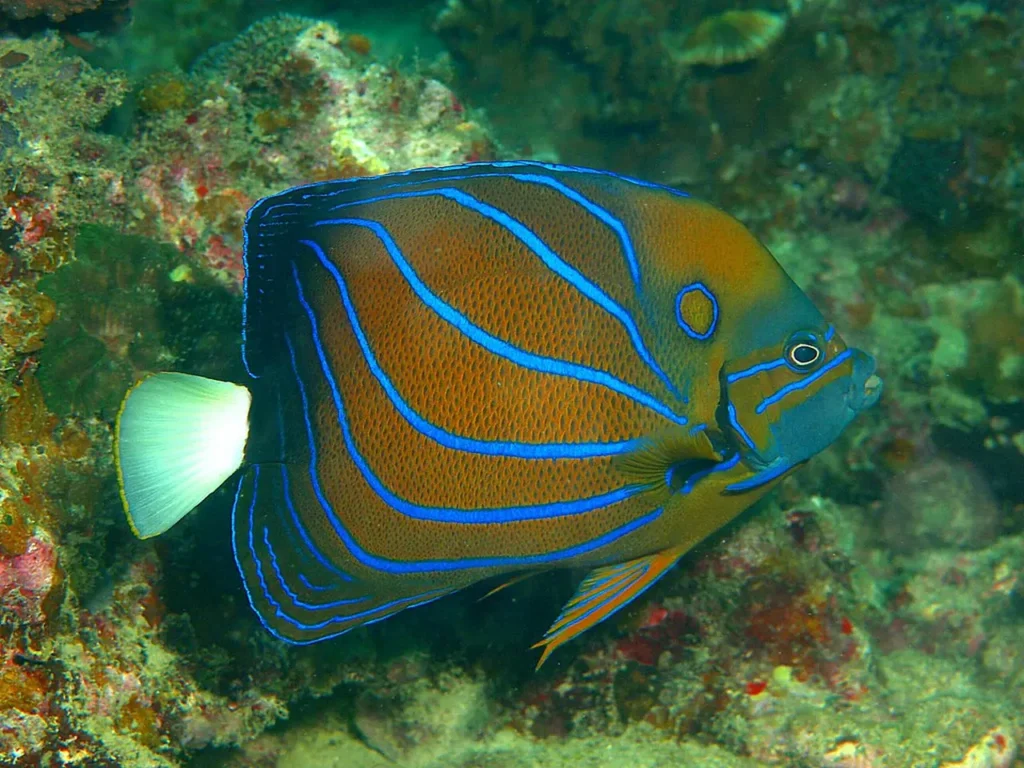

Appearance and Coloration
The Blue-ringed Angelfish is a medium-sized marine fish, featuring a distinctive and eye-catching color palette. Its body is predominantly dark blue, with electric blue rings encircling its eyes and vertical bars running along its sides. These bright blue accents contrast beautifully with the fish’s yellow dorsal and anal fins, creating an exquisite visual display.
Juvenile Blue-ringed Angelfish exhibit a slightly different coloration, with a deep blue body adorned with thin yellow stripes. As they mature, their appearance gradually transforms into the adult coloration, captivating observers with their vibrant hues.
Habitat and Distribution
Blue-ringed Angelfish inhabit the warm waters of the Indo-Pacific region, particularly the coral reefs of the Indian Ocean, the Red Sea, and the Pacific Ocean. They prefer areas with rich coral formations, including both shallow and deeper reef slopes. These fish seek shelter and forage among the coral structures, utilizing the crevices and hiding spots that the reef provides.
Behavior and Feeding Habits
Blue-ringed Angelfish are primarily herbivorous, with their diet consisting of algae, small invertebrates, and coral polyps. They play an essential role in the reef ecosystem as grazers, helping to control algae growth and maintain the health of coral colonies.
These angelfish are known for their territorial behavior and defend a specific area of the reef as their own. Males establish and guard their territories, engaging in aggressive displays to deter intruders. Females are often observed in pairs or small groups, foraging and socializing within their designated areas.
Breeding and Life Cycle
The reproductive behavior of the Blue-ringed Angelfish is not well documented, but it is believed to follow a similar pattern to other angelfish species. They are generally monogamous, forming pairs during the breeding season. The female lays eggs, which are fertilized by the male. The eggs hatch into larvae, which eventually transform into juveniles and settle in the reef habitat.
Conservation and Threats
The Blue-ringed Angelfish, like many other coral reef inhabitants, faces numerous threats to its survival. Habitat destruction, coral bleaching, overfishing, and the impacts of climate change pose significant challenges to these beautiful creatures. The degradation of coral reefs and the loss of their food sources and shelter have a direct impact on the populations of Blue-ringed Angelfish and other reef species.
Conservation efforts aimed at protecting coral reefs, implementing sustainable fishing practices, and raising awareness about the importance of reef ecosystems are crucial for the survival of the Blue-ringed Angelfish. By supporting these initiatives, we can contribute to the preservation of these stunning fish and the delicate balance of the coral reef ecosystems they call home.
A Living Jewel of the Seas
The Blue-ringed Angelfish represents the beauty and diversity that thrive beneath the ocean’s surface. Its vivid colors and graceful movements make it a true jewel of the coral reefs, captivating divers and snorkelers with its presence. By valuing and safeguarding the fragile ecosystems that support these remarkable fish, we can ensure that the Blue-ringed Angelfish continues to enchant and inspire generations to come.
